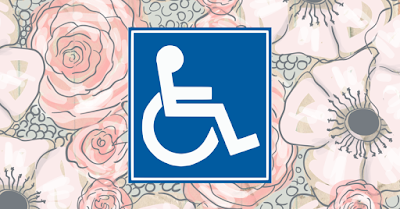 |
| FFL green and orange wristband art by mom. |
I’ll start off my blog post with the caption I wrote on my Instagram post this morning.
“Friends For Life feels like coming back home every summer and getting to see your family from far away after a long time apart. Giant family reunion. These people have such a special place in my heart and I’ve felt surrounded by so much love the last few days. And getting to meet new friends, and friends I’ve been talking to online for ages was so exciting. @cwdiabetes gives us the biggest gift of all and I will be thankful for them forever. I’ll get some more thoughts together for a blog post but for now, I’m leaving FFL with my eyes teary but my heart full 💚”

For those of you reading this who are hearing about Friends For Life for the first time, it’s a conference put on by Children With Diabetes. I’m talking about the Orlando one, which is absolutely HUGE, with over 2000 people, all who either have Type 1 (we wear green wristbands) or love someone with Type 1 (they wear orange wristbands). There are such fun programs for kids, tweens, and teens with amazing staff, and all kinds of sessions for the adults during the day. Some examples of the variety of sessions this year: “Diabetes Technology Update”, “Language Matters”, “How to DIY Loop”, “Avoiding and Overcoming Diabetes Burnout”... There are so many great sessions going on that it’s a challenge to choose which one to go to in each time slot!
This year, because of the bad timing of my open heart surgery, we didn’t think we’d make it to Friends for Life at all. Well, in the best plot twist, we did! We got there late. And 30 minutes before the session where I was going to speak on a panel! Just in the knick of time.
I had the pleasure of being on a panel discussing “Finding Your Tribe: Support & Knowledge in Social Media” with some of my favourite people; Kerri Sparling, Scott Johnson, Mary Lucas, and Cherise Shockley. We talked about all things from Instagram, Twitter, Facebook, and blogs, to Doreen, hashtags, the evolution of our online community. It was a really cool discussion and I’m planning on writing a more detailed post about it, so keep your eyes peeled.
 |
| Sitting on the panel with Cherise and Mary. |
There is a team at Friends for Life that works really hard on figuring out what meals they’re going to serve us, and figuring out the nutrition facts of every single item so they can lay out how many carbs are in each thing and no one has to figure it out for themselves! It’s great for us adults, but also so nice for all the T1D parents who have to do all the carb counting for their kids! No guessing games. I think seeing the carb counts on the buffet is something every family there gets giddy about. All thanks to the nutrition team.

Then we have the exhibit hall, where different diabetes companies, organizations, research teams, and shops set up at booths. And let me tell you, it’s HUGE. There are also so many fun activities for the kids. From claw machines where you could win fun prizes at the Dexcom booth, to face painting, Mickey ear decorating, snow cone stations, ... half the fun is seeing all the kids running around having the time of their lives! Some of the bigger booths were companies Dexcom, Lilly, Omnipod, Tandem, Novo Nordisk. Then we had some amazing organizations there like Beyond Type 1, Diabulimia Helpline, and Padre Foundation, who are doing such important work! I was especially happy to see the Diabulimia Helpline booth, a booth dedicated to mental health, which was something new there and something that I think so many people need but are quiet about needing. Then of course we had our fun shops like Myabetic, A Tad Too Sweet, Pump Peelz, and Sugar Medical. Honestly, this is just a very tiny peek into what that exhibit hall holds. I wish I could name every booth that was in there because there were some really interesting things!


As you can tell, with all these things going on, everyone is running around trying to get somewhere all the time! So it’s so nice to have parties at night where we can all just let loose and have fun together, spend quality time, and of course eat good food. This year we had a family fun beach party, an adult party of the decades, family movie night, and of course the banquet which was a ball this year for the 20th anniversary. Fancy dresses and suits everywhere!
But what is at the core of this conference, what is in its essence, is love. It’s unconditional understanding of one another. It’s joy everywhere you look. It’s treating everyone there as if they were part of your own family. Because no T1D family leaves another T1D on their own. It’s tears of joy, and tears of relief, because you’re finally among a sea of people who understand your struggle. It’s feelings of pride, looking around you in awe seeing all these amazing and special people, and realizing that you’re one of them too.
Friends For Life is a gift that keeps on giving. Because the friendships and bonds formed last far longer than imaginable, and the lessons you take with you will stay with you for the rest of your life and maybe even change the way you live.
It’s so much more than just a conference. In a sea of green and orange bracelets, you will find a home.
Until next year, FFL Orlando.










































